Made from a casting of the original!
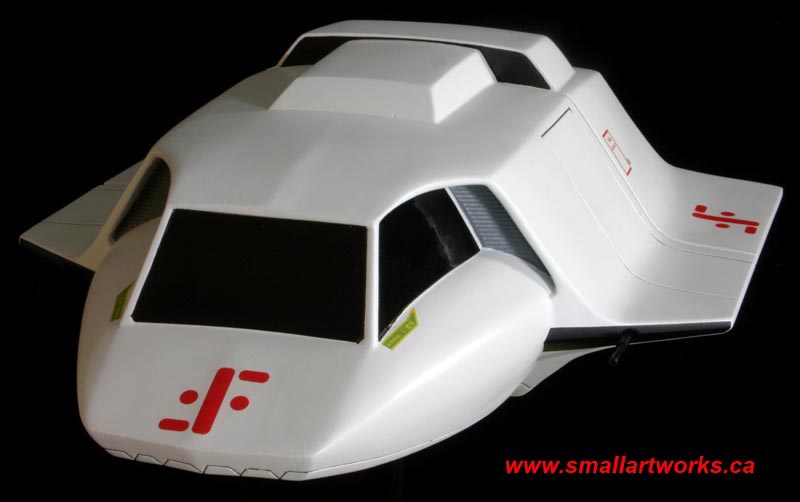
<>
Made from a casting of the original!

|
So in the most important aspects, this 15-3/4" long model is a 100% accurate replica. "Okay, cool ship," you might say, "But why does this thing look like an unrealistic toy?" Well, yes, I guess it does. However, several reasons contribute to this. The original filming models were quite small for a model of this type, and relatively crude due to the budget constraints of broadcast television and the haste with which these models had to be constructed, reportedly by master modelmaker Greg Jein. (They do not perfectly match the proportions of the full scale mockups that the actors worked around on the sets, for example) The theory was that the low resolution of the television format would hide most of the flaws of the zooming models and would be convincing enough within the context of the story. You never see the miniatures in the show anywhere near as clearly as you do in the photographs presented here. Also, the smooth skin of the ship has almost no scale-enhancing details as were so common on most sci-fi ships in film and TV. The unweathered glossy white paint job and plate glass window design represent the most difficult challenge to filming miniatures, as the tiniest flaws betray the scale of the models. When watching the show on higher quality DVD today, the flaws become even more apparent. Normally, with a greater budget, much larger and more carefully detailed models would have been used to greater effect. In fact, one of the models of the transport version of the ship made was actually prepared so as to BE an actual toy during the first film's early scenes where Donovan's son and his friend are playing with the "marketed products", within the context of the story, inspired by the Visitors! Due to the smooth skinned nature of the craft and the relative simplicity of the design with respect to casting, the removable hatches to hide mounting armatures for motion control camera work normally used on more detailed models were likely less practical than to simply manufacture different models for whatever angle the model was to be shot from, further making the quickly made props look even more different each time we see them. Each model would be made with an armature mount in a different place, away from the camera, as needed for each type of shot. Therefore several fiberglass castings of the original master were made for filming and they varied from each other from shot to shot in many ways, so various versions of the "same ship" were seen. In studying the DVD of the show itself, it is obvious that some had details that others did not as the individual models were prepared for various filming techniques, even though they were apparently supposed to be identical. Flopping the film was also used to show a ship from the opposite side or flying in the opposite direction. This can be seen by noticing the red swastika-like logo which is seen reversed in some shots. 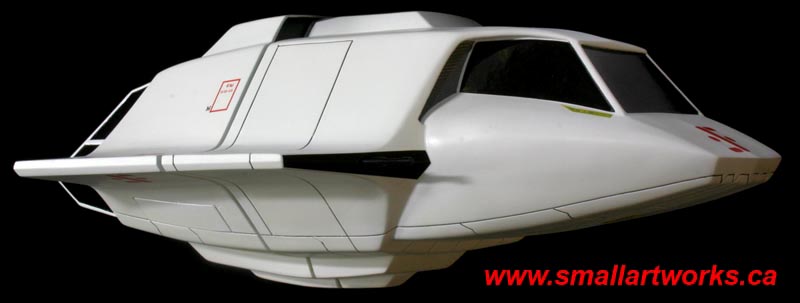 The replica you see on this page was made from a two-piece casting set, the front and rear halves (by a now bankrupted and defunct company called Scale Model Technologies in Calgary, Alberta) in urethane resin and retains the flaws of the original. However, when the two halves were offered to each other, the mismatch of the parts (a result of the flaws of the original miniature prop, not the castings) were far too great for a display model, so a lot of work was expended to fix, putty and sand the parts so that they would line up properly and match each other a little better. This, for the purist, would be the only innaccurate modification I made, as when examining the SFX footage of the TV show itself, the mismatch is quite obvious even there! Thus I opted to modify that rather glaring imperfection for display purposes - sacrificing to a small degree, some would argue - some of the originality of the model. 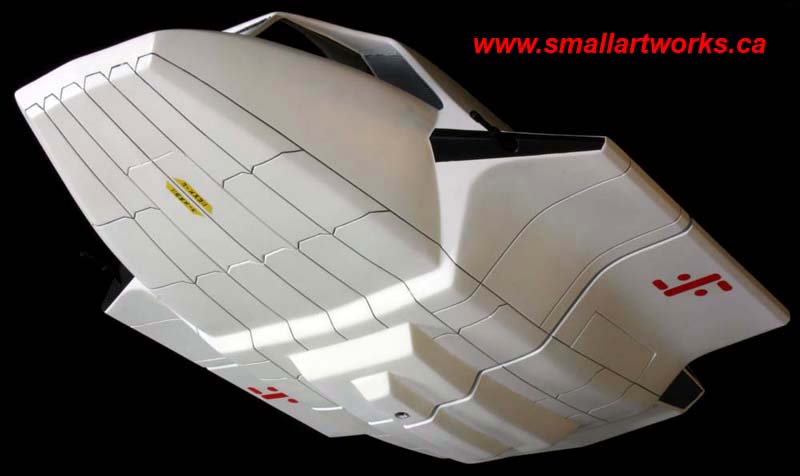 Also, I wanted to make my model to be modular as well, so I built it in such a way as to allow the two halves to be taken apart at will so that If I ever build the cargo and passenger pods that go in between them as seen in the show, I can do it with this model. Additionally, I cut out the landing gear doors on the front and rear so that they could be removed so that the finished gear (having been researched and mastered from scratch by myself and to be reproduced ) could be plugged into place as desired. I also added the laser guns (difficult to see in most of the pictures) made from brass rod and tubing and placed into drilled holes on the "wing" leading edges using friction fits so they can be removed as well. The little hole on the bottom was drilled so I could mount it on a stand. 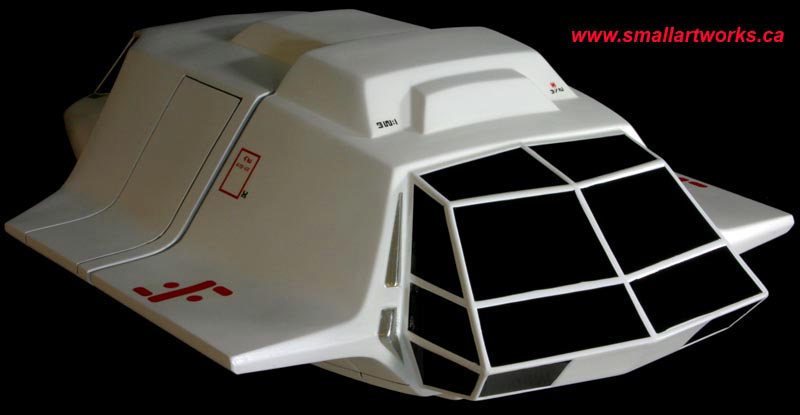 The model was sprayed with Krylon white and extremely accurate decals were applied, made by JBOT using artwork I had prepared in Photoshop based on photographs and measurements taken from the original studio model. The little silvery whatchamacallits on the back of the ship were covered in Bare Metal Foil. The entire model was sprayed with a semi-gloss acrylic. Then, the window blackouts (painted gloss black on the original) and the wing leading edges were made on my replica using black signmaker's vinyl. This, for me, was a lot easier to do than to mask and spray them all individually, and was more forgiving if errors were made. Although attractive and impressive when displayed on the shelf, this model still retains the flaws of the original studio model which means it will never win any modelmaking contests... it is an "arm's length" model at best, but is significant in that, short of finding an actual original and paying a fortune for it, it is the most accurate representation that one can obtain of the miniatures that were placed in front of the cameras during the making of the show. 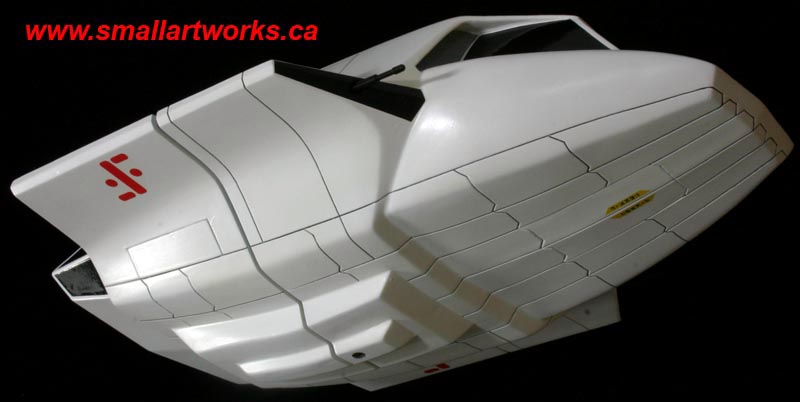 The following pictures show the same model above equipped with the landing gear I mastered from scratch. The highly accurate master patterns were cast up into sets. The oleo struts have a solid 1/4" aluminum bar running the length of them for rigidity, because if they were just resin alone they would sag over time with the weight of the model. The landing gear represents the full sized mockup configuration, as that is the way it was "meant" to be. The FX artists, when showing the fighter version landing gear simply put the round and stubby passenger pod legs on the rear, as this was easiest to do in a hurry, but look awful when scrutinized, and did not even come close to matching the full sized mockup, most commonly shown sitting on the ground. Therefore, in a deviation from my normal practice of "replicating a studio miniature", I decided to make the landing gear as per the full sized mockups, which look a LOT better than those used on the miniatures. 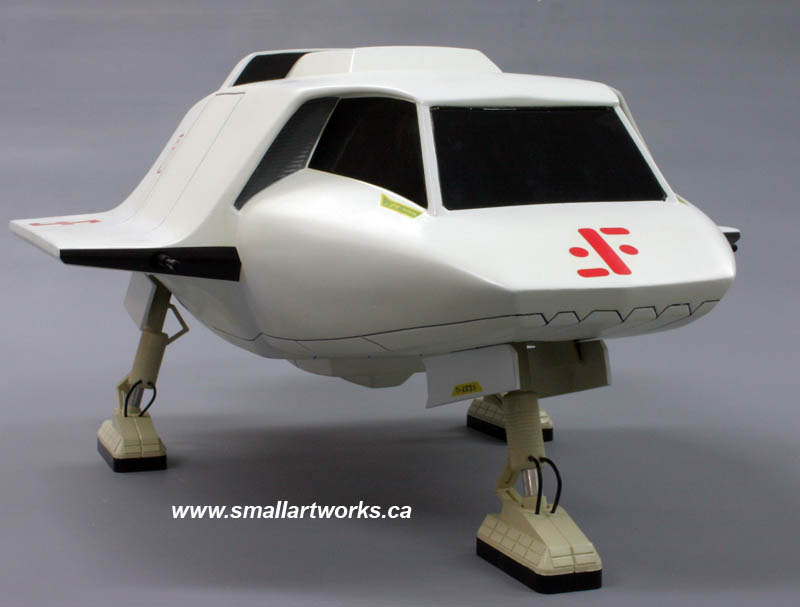 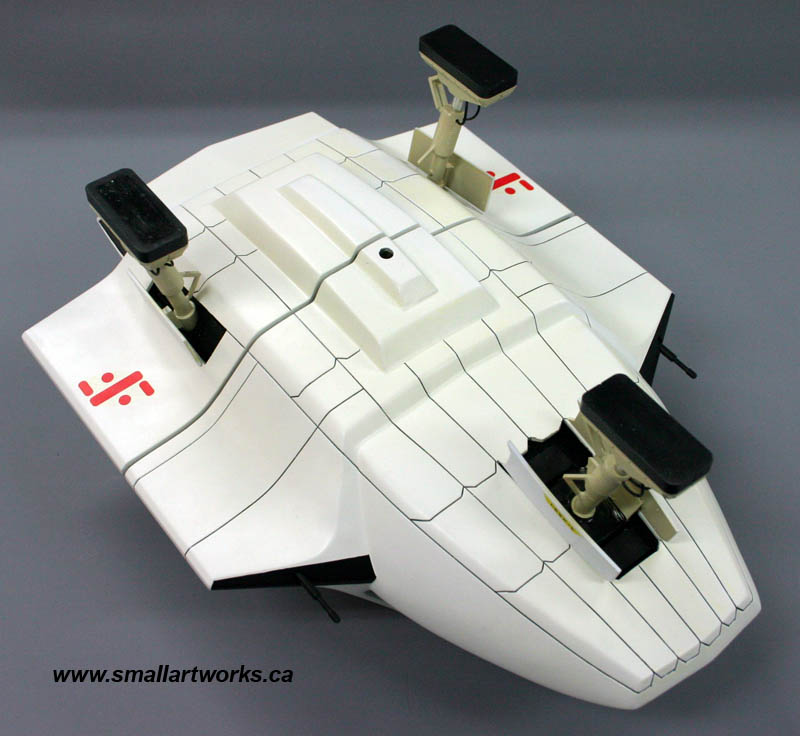 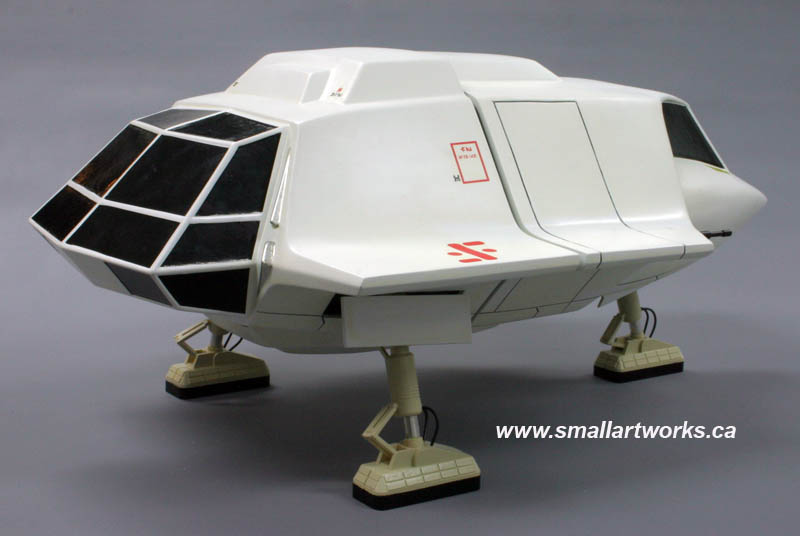 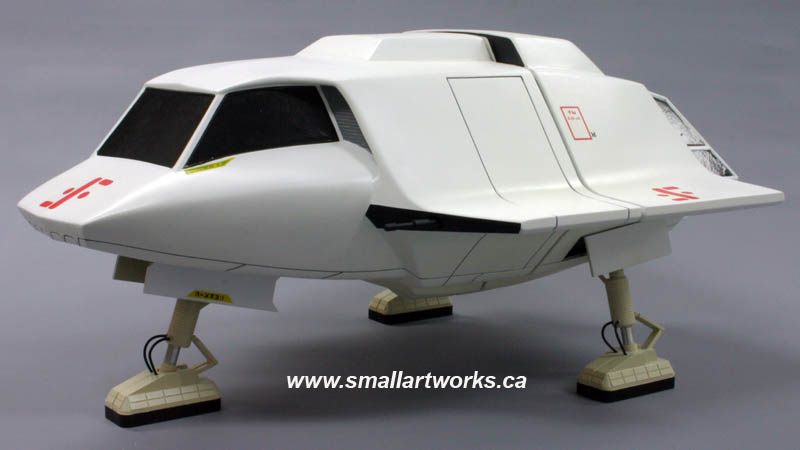 I designed the gear so that they could be easily unplugged to return the model to the "in-flight" mode when desired. The gear sets are made with the "open" doors in place so that they could be unplugged as a unit. The doors for the in flight mode are just held on with magnets buried in the black-painted gear wells and are attracted to the mating magnets glued to the "closed" doors. 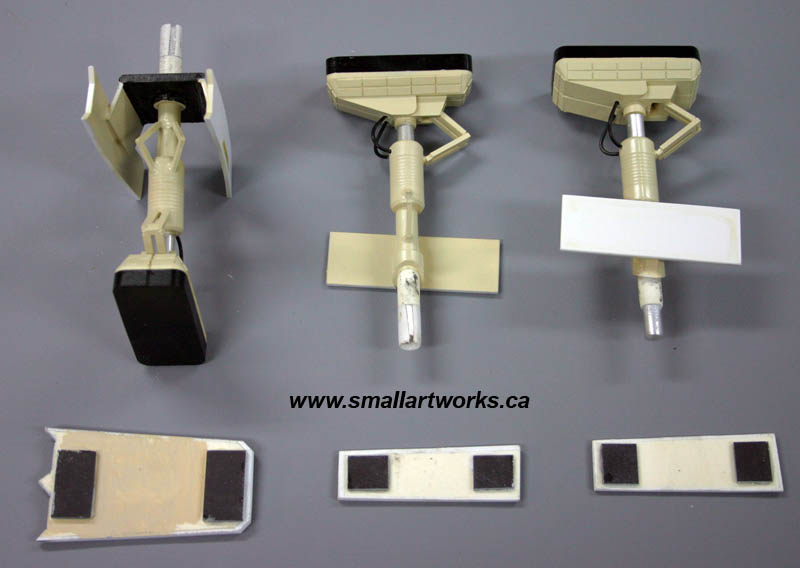 |